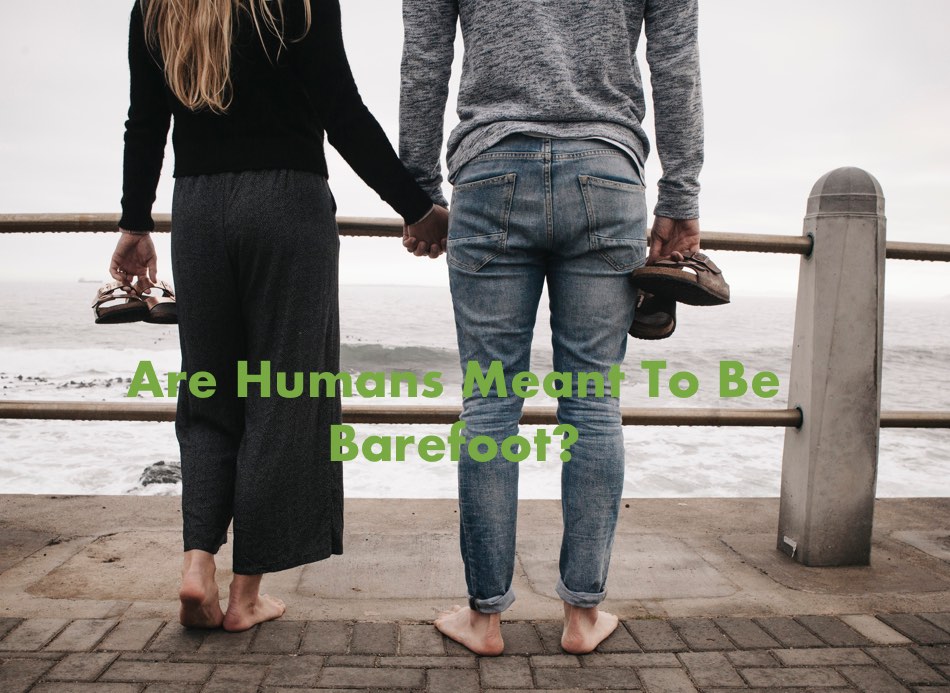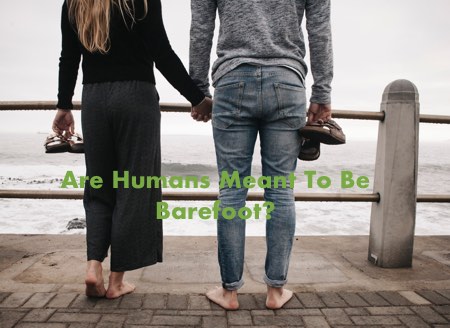
Are humans meant to barefoot? photo credit: Justin Groep
Are Humans Meant To Be Barefoot?
Table of Contents
A fact of life we all have come to accept as the norm is that we have to wear clothing of some sort. This, of course, has to be appropriate to and will vary based on your location, culture and customs.
None more so than what we put on our feet. We have footwear available to us of every shape, form, function and size. However, have you ever stopped to ask the questions for a second –
Are humans meant to be barefoot? Humans are meant to be barefoot yes. What we wear on our feet should be a minimalist covering to protect them from the predominantly man-made surfaces we have created. Fortunately, evolution has equipped us correctly and given us perfect tools to do the job of getting around, walking and running.
We are indeed meant to be Barefoot.
This article will walk you through some of the amazing findings from my research into science and history. All of these will give you a lot more insight so you know more. Let me show you.
A Brief History Of Walking And Human Adaptations
With millions of years of evolution behind us, Homo Sapiens (Humans) as we are known have become Bipeds.
A biped is essentially a two-legged mammal that gets around on it two feet without relying on its forearms for propulsion and support.
This is true in the case of human beings. We evolved over millions of years so we could walk and run as we needed, to survive and thrive. We can safely deduce that barefoot walking was probably the primary form of human movement and migration. Barefoot running was an adaptation more for hunting down game for meat and escape and evasion of predators.
Here is an excerpt from Professor Dan Lieberman’s book The story of the human body.
Here he was quoting Charles Darwin (1871).
Man alone has become a biped; and we can, I think, partly see how he has come to assume his erect attitude, which forms one of his most conspicuous characters. Man could not have attained his present dominant position in the world without the use of his hands, which are so admirably adapted to act in obedience to his will. … But the hands and arms could hardly have become perfect enough to have manufactured weapons, or to have hurled stones and spears with a true aim, as long as they were habitually used for locomotion and for supporting the whole weight of the body, or, as before remarked, so long as they were especially fitted for climbing trees.
… If it be an advantage to man to stand firmly on his feet and to have his hands and arms free, of which, from his pre-eminent success in the battle of life, there can be no doubt, then I can see no reason why it should not have been advantageous to the progenitors of man to have become more and more erect or bipedal.
They would thus have been better able to defend themselves with stones or clubs, to attack their prey, or otherwise to obtain food. The best built individuals would in the long run have succeeded best, and have survived in larger numbers.
We continued to evolve even further with our hips fully opened up and suitably adapted for walking and running.
The need to trek long distances in this age would have been key to being an effective hunter-gatherer. And as I said earlier, escape from a predator was also a top priority for early man.
The fastest of us like Usain Bolt can run up to 37 kilometres (23 Miles) per hour for about 10 seconds compared to a lion which can go twice as fast for about four mins.
However Dr Lieberman went on further to say:
However, there is plentiful evidence that by the time of H. erectus our ancestors had evolved exceptional abilities to run long distances at moderate speeds in hot conditions. The adaptations underlying these abilities helped transform the human body in crucial ways and explain why humans, even amateur athletes, are among the best long-distance runners in the mammalian world.
The Shoe Question: Yes Or No
The eternal question as to whether we are meant to wear shoes and what type we should wear will always be brought up. The answer is yes we are meant to be barefoot but as I said earlier can also wear minimalist shoes if we know what we are doing.
Walking and running completely barefoot will always be the ultimate expression of movement. It is how we were designed to function. Therefore it stands to reason that the more we add under our feet, the more there will be an effect on our movement patterns.
Research has shown that running in barefoot shoes will allow us to avoid heel striking. Barefoot running study: How humans ran comfortably and safely before the invention of shoes: Harvard 2010 says
Scientists have found that those who run barefoot, or in minimal footwear, tend to avoid “heel-striking,” and instead land on the ball of the foot or the middle of the foot. In so doing, these runners use the architecture of the foot and leg and some clever Newtonian physics to avoid hurtful and potentially damaging impacts, equivalent to two to three times body weight, that shod heel-strikers repeatedly experience.
